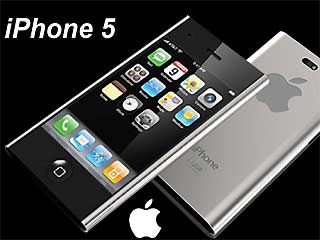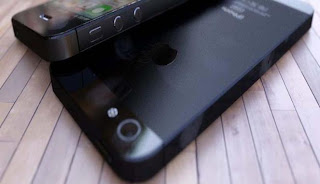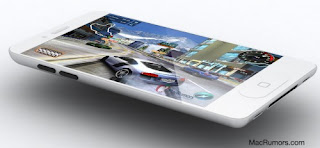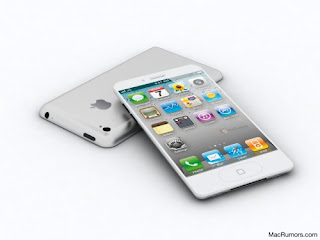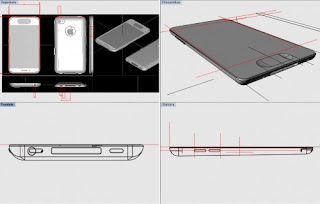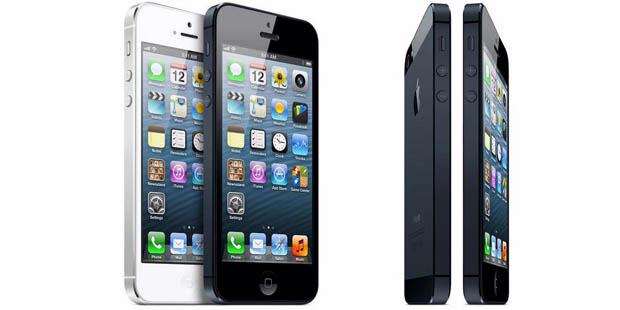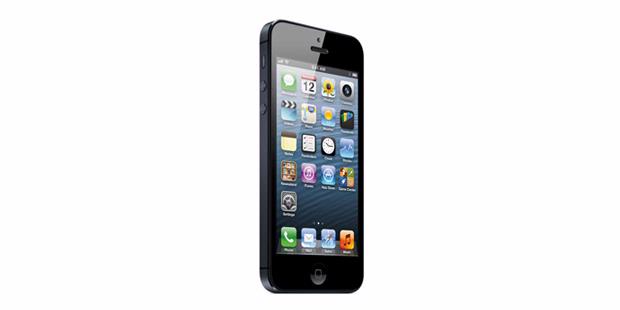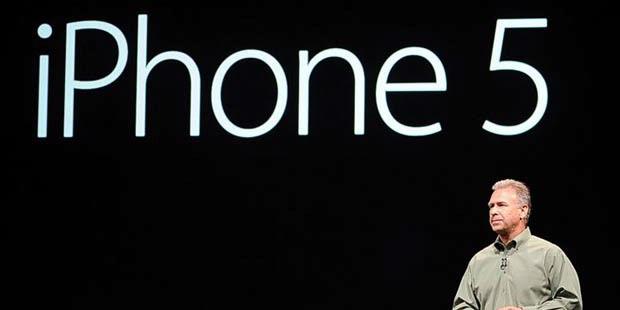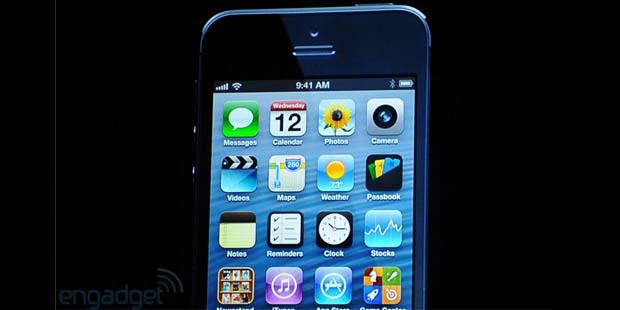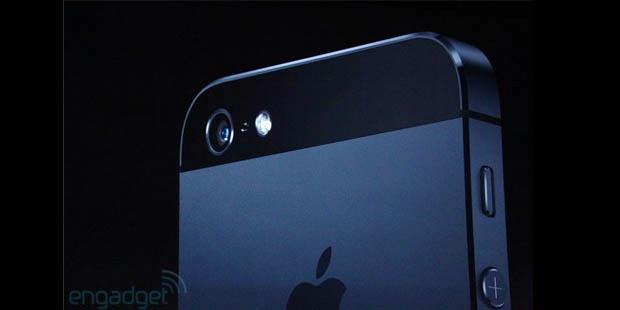Thinner. Lighter. Faster. Simpler. The moment the iPhone 5
was unveiled
we knew that it was checking off all the right boxes, folding in all
the improvements and refinements people have been demanding over the
past year -- yet plenty of folks still went to their respective social
networks to type out their bitter disappointment. iPhone upgrade ennui
seemed to be sweeping the nation, a sentiment that appeared to quickly
dissipate when it came time for people to
vote with their wallets.
The iPhone 5 is here -- or
will be soon, anyway -- and it's every bit the device that people were asking for when the
iPhone 4S
came out. Its new design has less mass yet leaves room for a larger
display and LTE wireless, all while increasing battery life. In nearly
every respect, this is an upgrade over the 4S that came before, though
it arrives almost a year later than many had hoped. Is it too late to
keep pace with the rapidly iterating Android offerings, or is it so good
it was worth waiting for? The answer lies below.
Hardware
Clearly, the company is confident that it's knocked it out of the park
again when it comes to the design of the latest iPhone, and we have to
agree.
Apple introduced the iPhone 5 to the world
by elevating it from a hidden pylon, rising from the floor and literally
sitting on a pedestal for the world to admire while precisely focused
lights made the thing gleam like a jewel. Clearly, the company is
confident that it's knocked it out of the park again, and we have to
agree. But, that new design isn't perfect -- not quite a grand slam, if
you'll allow us to continue the metaphor.
The iPhone 5 is a clear evolution of the stark, industrial design introduced two years ago with the
iPhone 4.
That collection of square edges and raw materials was a huge contrast
to everything else the company was producing and, frankly, everything
else on the market. It was like an artifact from another dimension where
ergonomics lost out to purity of vision, and Apple saw no reason to
compromise that purity for the 4S nor, as it turns out, for the 5.
Visually, much has stayed the same, but the biggest change is
impossible to see. Pick up the iPhone 5 and you're immediately struck by
the reduction in weight. At 112 grams it's 20 percent lighter than the
4S, a figure that doesn't seem like it would make much of an impact. It
does -- so much so that it's the lightness, not the bigger display or
the thinness, that nearly everybody praises when first getting a chance
to hold the iPhone 5 in their own hands.
Meanwhile, the changes in dimensions are surprisingly difficult to
detect. That's largely thanks to the iPhone 5 being exactly as wide as
the 4 and 4S that came before. This continuity of proportions on the x
axis brings familiarity, while a slight increase on the y axis adds
functionality. The iPhone 5 measures 4.87 x 2.31 x 0.3 inches (124 x 59 x
7.6mm), making it about a third of an inch (nearly 1cm) taller than
before. Since all the extra room happens outside of your grip you hardly
notice it, and this also shifts the phone's center of mass away from
the center of your hand, which we think helps augment the perception of
lightness.
Visually much has stayed the same, but the biggest change is impossible to see.
The new height makes room for that 4-inch, 1,136 x 640 display -- the
most progressive change by a long shot. Steve Jobs famously said that
the 3.5-inch screen size is the "sweet spot" and, frankly, it was about
time Apple added a little more sugar. The new height results in a phone
with more usable space and better presentation for HD content (the
iPhone is finally 16:9). Yet, it's still easy to use with one hand. Each
corner is comfortably reachable by thumbs of nearly all sizes.
That reachability is also helped by the decrease in thickness: 7.6mm,
down from 9.3mm on the iPhone 4S. It isn't the world's thinnest
smartphone that Apple claimed it was (the original
Droid RAZR is thinner, among others), but this is still an impressively svelte device.
An all-new aluminum construction extends around the back, which is
either anodized black or left raw depending on whether you opt for the
darker or lighter of the two offerings. The white phone is bright and
clean-looking; the black, dark and menacing. We'll let you draw
conclusions about personality based on color preference, but we will say
that the black surface seems to suck up fingerprints that are difficult
to clean. Even so, we're glad the all-glass back has been retired,
though traces of it remain: two slivers of the stuff punctuate the top
and bottom of the back sides. These glossy bands break up the matte
uniformity, but help boost antenna performance.
That said, the
antennas still comprise the rim of the device, thinner now and the gap
between them filled with a material whose color matches the body -- yet
more evidence of the design team's attention to detail. These are the
same sort of dynamically reconfiguring antennas used on the 4S and, as
with that phone, we weren't able to
death grip our way into any sort of signal issues.
The face of the device is still fashioned out of glass (no surprise
there) and while Apple wouldn't confirm whether that front is indeed the
sort of
primate-proof silica
produced by Corning, we'd hazard a guess that it is. With the metal
back now sitting flush to the chamfered edge of the device, the slightly
elevated glass surface gives the profile view of the phone a bit of
unfortunate asymmetry -- it's now thicker on top than on the bottom.
But that elevated glass does mean your finger doesn't hit any rough
edges or unfortunate surfaces when tracing the edges of the panel. The
front-facing FaceTime HD camera now sits centered, directly above the
earpiece. The Home button, meanwhile, has moved a fraction of a
millimeter down and its resistance feels slightly different than that on
the 4S, a touch more progressive with a more definitive detent.
Hopefully the internal mechanism will prove more durable over time.
The position and design of the other buttons is likewise largely
unchanged from the 4S, with the discrete, circular volume up and down
buttons on the left just below the (slightly thinner) toggle switch. The
headphone jack now moves to the bottom, a change that will cause some
to modify their well-established pocket-retrieval mannerisms. But, as
users of the
iPod touch will tell you, having that jack on the bottom feels quite natural, and we agree. This is a good move.
The phone's speakers are also positioned on the bottom, playing out
through a series of 26 holes that flank another major change in the
iPhone 5: the Lightning connector.
Lightning
Goodbye, venerable Dock connector. Hello,
Lightning. For nearly 10 years the 30-pin Dock connector has been ubiquitous, sprouting out of accessories
small and
large,
but ever since iPods started getting thinner we all knew its days were
numbered. The giant, clunky connector is a painful legacy of an earlier
time that needs to be removed from the ecosystem and, with the iPhone 5,
Apple decided it was time to rip off the Band-Aid. Indeed the Dock
connector must go and we won't miss it, but Lightning doesn't always
feel like a confident step forward.
First, the good: the
Lightning connector is infinitely easier to connect. It slots in nicely
and does so regardless of orientation, plugging in right-side-up or
upside-down. We were able to drive it home without looking the first
time, and every time thereafter. (If only the same could be said for the
USB connector on the other side.) It's also small, seems infinitely
more durable than its flimsy-feeling elder and even stronger than
micro-USB alternatives.
Superficially, it hits all the right marks, but Lightning comes up short in a number of important areas.
Superficially, it's hitting all the right marks, but Lightning comes up
short in a number of important areas. It is, of course, incompatible
with the roughly 350 million billion iPhone and iPod accessories
currently on the market -- a problem mostly rectified by a
$30 adapter. But, that's not a perfect solution, as even that won't support
iPod Out, the specification used in some cars (most notably BMW and Mini) to enable in-dash control of an iPod or iPhone.
That's an admittedly low number of users left with no way forward, as
the adapter will provide the power and analog audio that the vast
majority of docks and accessories (and cars) in the world need, but it's
still disappointing to see those automotive users, owners of some of
the most expensive iPod docks on the planet, left out in the cold.
More problematic is the speed of this new connector. Lightning's name comes as a cheeky play on the
Thunderbolt
connector, yet Lightning is, at least for now, wholly independent from
that standard. In fact, the implementation that comes with the iPhone 5
is based on USB 2.0, meaning that theoretical maximum data transfer
rates are no faster than what came before. In practice, though, we were
surprised to actually find a tangible difference between the two phones.
To test this we lined up an iPhone 4S next to an iPhone 5 and ran both
through a number of syncs with large files. Pulling 5.5GB of data from
iTunes to the iPhone 4S took five minutes and six seconds on average.
Syncing those same files to the iPhone 5 took three minutes and 57
seconds on average. So, nearly 20 percent faster, but we're not sure how
much of this is due to the new connector and how much can be attributed
to faster internals in the phone itself.
We confirmed with Apple
that the iPhone 5 itself only supports USB 2.0, so a faster
interconnect on the other end wouldn't help anything (and it's unclear
whether the internal storage could consume data more quickly if it were
there), but there's nothing stopping the company from expanding the
Lightning standard to work with Thunderbolt or USB 3.0 in the future.
For now, at least, the new connector remains confusingly at odds with
Apple's own next-generation and similarly named data interconnect.
That's no problem if you're using one of the many and myriad wireless
ways to pull content directly onto the device (hello,
iCloud), but if you're still pushing your media over a cable from your main iTunes library, it's still going to take awhile.
Internals
The heart of the iPhone 5 is the new
A6 processor,
a chip that Apple wasn't too keen to describe other than it being
"twice as fast" as the last-gen A5 and "22 percent smaller." Thankfully,
we have
ways -- namely, Geekbench, which identifies this as a dual-core 1.05GHz processor paired with 1GB of RAM.
Why not tell this up front? It's clear the folks in Cupertino are sick
of people trying to draw conclusions based on core count and gigahertz
goals, so they're just sitting this one out. Apple isn't alone, with
Intel emphasizing names like Core i5 and Core i7 over raw clock speeds,
and Qualcomm and NVIDIA using iterative designations like S4 and Tegra 3
for their respective processors. Still, none have gone so far as to
stop publishing key specifications altogether.
We've long-since departed from a time when clock speed or core count could be directly correlated with performance.
Maybe they should. We've long since departed from a time when clock
speed or core count could be directly correlated with performance across
CPU architectures and, with Apple constructing its own,
custom SoC for the A6,
that's doubly true. Why, the dual-core A5 chip in the iPhone 4S shows
as 800MHz, so looking purely at numbers this new phone should only be 25
percent faster, not twice as fast. We'll put that to the test a little
later.
For storage you have a choice of 16, 32 or 64GB models
priced (on contract) at $199, $299 and $399. Unsurprisingly, storage is
not expandable, but hey, dig that iCloud.
Apple has also greatly improved the iPhone's wireless connectivity
options, with the addition of LTE being the biggest talking point.
Across the regional variants that will be sold around the world, 700MHz
AWS bands for LTE for AT&T in the US are supported, plus Rogers,
Bell and Telus in Canada and various carriers in Europe and Asia using
bands 1, 3 and 5. Meanwhile, a CDMA version handles Verizon and Sprint
LTE in the US plus KDDI in Japan using Bands 1, 3, 5, 13 and 25.
That's a lot of spectrum to cover -- and we haven't even broached the
GSM/EDGE, UMTS/HSPA+, DC-HSDPA support in the GSM model, nor the CDMA
EV-DO Rev. A and Rev. B support in the other. What remains to be seen is
just what will be open and what will be locked by the various carriers
and whether international LTE
compatibility truly means international LTE
usability. That, in the short term, seems unlikely -- at the very least until the new nano-SIM standard becomes a little more available.
The choice of CDMA vs. GSM will likely come down to which carrier you're on, and which carrier you'd
like to
be on. In the US, it's naturally AT&T offering the GSM model,
Sprint and Verizon with CDMA. Beyond the availability of bands, an
important distinction is the ability to do simultaneous voice and data.
None of the iPhone 5 models can handle
Voice over LTE,
so when doing voice calling the phone falls back to either GSM or CDMA,
and CDMA doesn't support simultaneous voice and data. So, if you
absolutely need to talk and surf at the same time, you're stuck on
AT&T in the US.
On top of all that is an expanded selection
of WiFi connectivity options. The iPhone 5 adds 802.11a support to
complete the set of a/b/g/n compatibility. That connectivity is now
dual-band as well, so you can step up out of the crowded 2.4GHz into the
clear air at 5GHz. Bluetooth 4.0, GPS and GLONASS support all return.
Looking to get directions up the Road of Bones? You're covered here.
Display
The iPhone 4S already has one of the best displays on the market with
regard to pixel density, brightness and contrast, and the iPhone 5
brings that up another notch.
The iPhone 5 uses a
new 4-inch display that provides a half-inch of additional diagonal
extent compared to those iPhones that have come before. Massive
difference? Absolutely not, but it does give the phone enough surface
area to stay competitive without sizing it beyond the thumb reach of
your average consumer. In fact, its four corners seem just as attainable
as before, helped by Apple shifting the display down just a few
millimeters to get it closer to the center of your hand.
But we've talked enough about how it works in the hand. How does it
look?
Fantastic, frankly. The iPhone 4S already has one of the best displays
on the market with regard to things like pixel density, brightness and
contrast, and the iPhone 5 brings that up another notch -- and not just
because it has an additional 176 rows of pixels. Putting both under the
microscope, indeed, shows the same basic subpixel structure.
If there was one complaint about the 4S display it's that it suffered
from a somewhat greenish hue. The 5 fixes that -- if anything, extending
just a smidgen to the warm side, but displaying imagery that's much
more chromatically neutral than before. The phone also moves up to full
sRGB coverage, meaning it can accurately represent every color provided
by that spectrum, a claim to fame few smartphones can match.
Apple also promises fewer layers sandwiched between the subpixels and
the surface of the glass, the idea being greater contrast when you're
outside. Sure enough, the iPhone 5 is a great device for using out in
direct sunlight, though to be fair it's a minor improvement over the 4S,
which likewise doesn't fear the sun.
Cameras
The iSight camera here is basically unchanged from the 4S. The overall
mechanism has been pared down a bit to fit within the tight confines of
the iPhone 5, and the protective bit of glass on the outside has been
replaced with a 6mm disc of crystal sapphire for durability, which we
rather regrettably did not have a chance to put through a torture test.
So, that means we have an 8-megapixel, backside-illuminated sensor
shooting through a five-element, f/2.4 lens. And, with the bigger
screen, we now have a larger shutter release button, which is slightly
easier to tap by big thumbs.
Whether or not you actually want
a higher-quality front-facing camera depends on just how much time you
spend putting your face on before getting your FaceTime on.
Image quality is still among the best out there for a cameraphone,
unimproved but quite impressive in varying conditions. What has
improved, though, is the speed. Tap that big ol' thumb as quick as you
can and the iPhone 5 will keep up, whereas the iPhone 4S eventually fell
behind. It's at least on par with the
Galaxy Nexus, which also has a ridiculously quick shooter.
So, while the camera on the back is minimally improved, the one on the
front is a big step forward. Replacing the VGA FaceTime camera is a
1.2-megapixel FaceTime HD unit capable of capturing 720p video.
Resolution is obviously massively increased, but so too is overall image
quality, with far more accurate color reproduction. Of course, whether
or not you actually
want a higher-quality front-facing camera
depends on just how much time you spend putting your face on before
getting your FaceTime on.
New with iOS 6 is Panorama mode, where you can tap one button and just
sweep the phone around to create a massive image. Resulting files are
something like 11,000 x 2,500, with the exact resolution varying based
on how smoothly you panned from left to right. If you wander up or down
the display will warn you to keep in line, and you'll want to, as every
time you stray you're effectively cropping the resulting image.
The file is captured in one seamless motion and the final product is
almost always free of the sort of glitches and visual aberrations
typically found in these self-stitching panoramas. That said, it isn't
totally error-free. We took one panorama inside the New Museum in New
York City, a room full of thin black lines against a white background.
It's about as tough a test as Panorama mode will ever see and indeed you
can make out some slight glitches in those lines, but in normal
cityscapes and country scenes we struggled to find signs of artifacting.
The results are almost always very impressive.
Video capture remains the same on the rear-facing camera -- 1080p30
maximum and offering bright contrast and colors plus the same digital
image stabilization that we saw before, which results in reasonably
smooth shots even when you, yourself, aren't so smooth.
Performance and battery life
Two times faster? Twice the graphics performance? Better battery life?
Actually, yes. The iPhone 5 over-delivers on all those promises.
Two times faster? Twice the graphics performance? Better battery life?
Actually, yes. The iPhone 5 over-delivers on all those promises. Running
the Geekbench test suite on the iPhone 4S gave us an average score of
634. The iPhone 5 netted an average of 1,628. That's more than twice as
fast and, while you won't necessarily see such huge increases in
day-to-day usage, apps
do load noticeably quicker, HDR images
are processed in half the time and tasks like video rendering in iMovie
are equally expedient.
SunSpider scores average at 924ms, which
is more than twice as fast as the 2,200ms the iPhone 4S manages and
still quite a bit quicker than the 1,400ms scored by the
Galaxy S III and the 1,700ms managed by the
HTC One X.
More important than numbers, web pages load very quickly, snapping into
view as fast as your data plan can shovel the bits into Safari and,
once there, smoothly reacting to your gestures.
Naturally, we'd
be telling just half the story if we only talked performance. There's an
important question that's left: what kind of battery life can you
expect? Power is nothing without longevity and, shockingly, the iPhone 5
copes amazingly well. In a day of heavy usage with LTE, GPS and WiFi
all enabled, we managed 14 hours and 18 minutes before the phone
succumbed to the elements.
On our standard battery rundown test,
in which we loop a video with LTE and WiFi enabled and social accounts
pinging at regular intervals, the iPhone 5 managed a hugely impressive
11 hours and 15 minutes. That's just 10 minutes shy of the Motorola
Droid RAZR Maxx.
When it comes to wireless performance, the iPhone 5 didn't disappoint
either. We tested a CDMA variant on Verizon's network, going between 3G
and 4G connectivity as we traveled about this great nation. Overall, the
iPhone 5 did an excellent job at finding and keeping signals, and call
quality is quite good. Callers came through loud and clear and said we
sounded great as well -- though most of the time we sadly couldn't tell
them what we were calling them on. Data transmission speeds were at or
above comparable Android LTE devices held nearby, usually in the 10-20
Mbps range both up and down.
Software
The iPhone ships with Apple's latest mobile operating system, and for our full take on that we'll direct you toward our
full iOS 6 review.
But, let's discuss a few things that are particularly applicable to
smartphones. It's the new Maps app that will have the biggest impact on
most users, and in general we found Maps beautiful and fast, a smooth
and very aesthetically pleasing way to get from place to place.
But, it isn't nearly as comprehensive as Google's offerings on Android.
The biggest drawback is the unfortunate lack of public transportation
directions. If you haven't quite mastered New York City's subway system,
you won't get any help from your iPhone 5. Curiously, the app offers to
give you public transportation directions, but should you choose that
option it pops you straight into the App Store with a search for
"Routing Apps." Right now, there are zero results.
It also lacks
the detailed layering that you can apply in Google Maps and Google
Navigation, showing you whatever you want to see. Maps will list some
important POIs -- mostly gas stations and convenience shops -- but if
you want to see all Mexican restaurants on your route you'll have to dig
deeper. Finally, while Maps does show traffic, we never saw it give a
warning about traffic along a route currently being navigated. That's
important information for road trippers.
Passbook is similarly
incomplete. This is Apple dipping its toes into the virtual wallet
space, providing the ability for companies to write custom apps that
will slot in here and provide access to things like movie tickets and
value cards. But, as few major players have pledged to deploy their
services here, this serves as a framework for something that will be
cool rather than something that actually is right now. We're expecting
good things.
The new Shared Photo Streams feature, however, is a
welcome addition. Here you can select a few pictures from your roll, or
indeed a new picture you just snapped, and share it with one or more
friends -- or post it in the public for all to see. New photos added to
the stream popped up within about 30 seconds and, while it isn't quite
as seamless and fun as
Google+ Events, it's a nice way to share photos with friends.
In general, iOS 6 has seen some nice nips and tucks where it needed it.
iCloud integration is tighter, Safari is better and the overall
experience is more polished. But, it isn't a major step forward in any
regard. Suffice to say, conservative iPhone users won't have to worry
about anyone moving their cheese, but if you didn't like iOS before, you
still won't today.
Wrap-up
The iPhone 5 is a significant improvement over the iPhone 4S in nearly
every regard, and in those areas that didn't see an upgrade over its
predecessor -- camera, storage capacity -- one could make a strong case
that the iPhone 4S was already ahead of the curve. Every area, that is,
except for the OS. If anything, it's the operating system here that's
beginning to feel a bit dated and beginning to show its age.
Still, the iPhone 5 absolutely shines. Pick your benchmark and you'll
find Apple's thin new weapon sitting at or near the top. Will it
convince you to give up your Android or Windows Phone ways and join the
iOS side? Maybe, maybe not. Will it wow you? Hold it in your hand -- you
might be surprised. For the iOS faithful this is a no-brainer upgrade.
This is without a doubt the best iPhone yet. This is a hallmark of
design. This is the one you've been waiting for.




































